When you think of RPGs, the Genesis isn’t the first console to come to mind. There are quite a few memorable ones on the system here in America, such as the Phantasy Star series, the Shining games and Warsong (Langrisser Hikari) but the genre was never really supported as well as it was on either the PC-Engine or the SNES. In fact, most of the RPGs that did come out on the Mega Drive and Mega CD never got released stateside and were left behind in Japan, where the language barrier looms as large as the Great Wall of China.
One stops to wonder why none of these titles made it out of Japan, as RPGs seemed to be gaining in popularity during the ’90s. The common industry excuse is that translating such long and complex games takes time and most companies weren’t willing to invest the effort and cost into localizing a title that may or may not be successful. Thus, they passed on most RPGs in favor of more action-oriented games that could be brought out quickly and cheaply.
I, however, have a problem with this theory. If this were indeed the case, then why were so many great action games brought to Europe and not the U.S.? Many were translated to English, so why then weren’t they brought here? Where, for example, are Alien Soldier and Super Fantasy Zone? What happened? Couldn’t Sega see that RPGs were gaining popularity outside of the U.S.? Why haven’t any of them been released since in some sort of compilation (Sega Ages, for example)? The text excuse is just that: an excuse.
In any case, you can still enjoy these games (sans the plot, of course) and finally see what you were missing for all those years. I’ve included strategy/RPG titles here as well, due to their inclusion of the basic elements that define the genre. If you’re looking for information on domestic RPGs for the Genesis and Sega CD, then read our RPG Round Up for a complete listing of all 45 games!
Mega Drive
Bahamut Senki/Record of Bahamut War
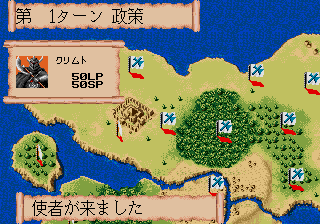 Long before there was the Saturn classic Dragon Force, the Mega Drive had Record of Bahamut War. Choose from one of eight rulers (good and evil) and set forth to conquer the continent of Bahamut, which has been in conflict and chaos for ages. Like Dragon Force, you must defeat all of the opposing leaders to beat the game and you must also conduct diplomatic affairs (alliances, trades, etc). When you’re ready to fight, let loose the dogs of war using a myriad of combatants. Anyone familiar with the incredible Dark Wizard on Sega CD will love this part of the game. Choose from standard warriors which must be paid for their services or send griffons, hydras, unicorns, and other monsters to do your bidding.
Long before there was the Saturn classic Dragon Force, the Mega Drive had Record of Bahamut War. Choose from one of eight rulers (good and evil) and set forth to conquer the continent of Bahamut, which has been in conflict and chaos for ages. Like Dragon Force, you must defeat all of the opposing leaders to beat the game and you must also conduct diplomatic affairs (alliances, trades, etc). When you’re ready to fight, let loose the dogs of war using a myriad of combatants. Anyone familiar with the incredible Dark Wizard on Sega CD will love this part of the game. Choose from standard warriors which must be paid for their services or send griffons, hydras, unicorns, and other monsters to do your bidding.
Gameplay is much like the two strategy/RPGs mentioned above, using hex maps to move your troops. The large amount of Japanese text involved may scare off some and the mediocre graphics don’t help much, but if those who wade through the menu system will find a deep and well-made title.
The Dragon Slayer series
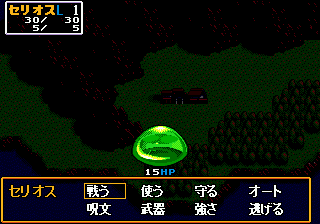 Very big in Japan, the Dragon Slayer franchise is yet another great bunch of Falcom RPGs that were never localized. Very traditional in play style, I think it would have been pretty well received had it made it over to America.
Very big in Japan, the Dragon Slayer franchise is yet another great bunch of Falcom RPGs that were never localized. Very traditional in play style, I think it would have been pretty well received had it made it over to America.
Betrayed by a longtime ally, Prince Selios must seek out new companions to save his land. The sequel follows the adventures of Selios’ son, Atlas. Both games are cosmetically identical, with the field shown in a top-down view a la Shining Force and combat done in first person (like Dragon Warrior). Gameplay doesn’t really require a lot of knowledge of the language and the only thing you’ll be missing is the plot, which isn’t all that deep to begin with. Only the second game has a FAQ/walkthrough available (for the SNES version) but since both games are identical, it should be good enough.
King Colossus: Tougi Ou
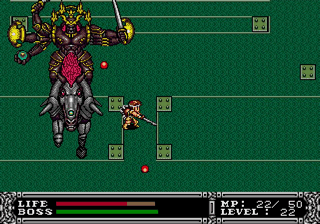 I have mixed emotions about King Colossus. On the one hand, I like the simple, Zelda-style gameplay and easy to use menu system. On the other hand, I detest the main character. He walks far too slowly and takes forever to swing his sword. Which brings me to my biggest gripe: the monsters themselves. I’m not going to rant on about how generic they are (jellies and giant spiders, oh my!). That’s typical RPG 101 basic stuff. No, my problem is that you practically need to shove your weapon down their throat to actually hit them. Shmups should have such tiny hit boxes. Once you get a bead on how to use each weapon, it no longer poses a problem, but to me it’s an unnecessary learning curve.
I have mixed emotions about King Colossus. On the one hand, I like the simple, Zelda-style gameplay and easy to use menu system. On the other hand, I detest the main character. He walks far too slowly and takes forever to swing his sword. Which brings me to my biggest gripe: the monsters themselves. I’m not going to rant on about how generic they are (jellies and giant spiders, oh my!). That’s typical RPG 101 basic stuff. No, my problem is that you practically need to shove your weapon down their throat to actually hit them. Shmups should have such tiny hit boxes. Once you get a bead on how to use each weapon, it no longer poses a problem, but to me it’s an unnecessary learning curve.
None of this takes away from the fact that King Colossus is a back-to-basics and enjoyable little action/RPG. It may not be on par with Crusader of Centy (now there’s a Zelda clone) and some might be quick to shrug off the simple graphics and typical early Genesis sounds. Given a chance, though, you’d be surprised at just how playable it is.
Lord Monarch
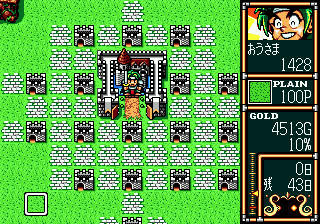 One more Falcom RPG that was never translated, Lord Monarch appears to have been inspired by Sega’s Shining Force series, as the graphical and musical styles are almost identical. Using the same super deformed characters, you play the part of a young prince who has to recapture local lands held by an enemy empire. As you move from area to area via a Popful Mail-like world map, you find several enemy strongholds that must be destroyed. To do this, you send out warriors that can construct bases of their own, thereby increasing your forces. Eventually, you over power the enemy and defeat him, thus freeing that section of the map.
One more Falcom RPG that was never translated, Lord Monarch appears to have been inspired by Sega’s Shining Force series, as the graphical and musical styles are almost identical. Using the same super deformed characters, you play the part of a young prince who has to recapture local lands held by an enemy empire. As you move from area to area via a Popful Mail-like world map, you find several enemy strongholds that must be destroyed. To do this, you send out warriors that can construct bases of their own, thereby increasing your forces. Eventually, you over power the enemy and defeat him, thus freeing that section of the map.
Though Lord Monarch is text-heavy in some cases, Falcom thoughtfully borrowed from Shining Force‘s menu system as well, using small icons next to the text. With some trial and error and a sheet of paper to keep track of what’s what, you should be able to play through it with no trouble.
Rent-A-Hero
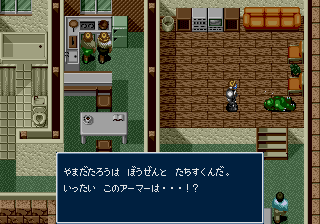 How is it that a game gets released, then re-released, and still never makes it to the U.S.? We never got to play Sega’s popular Japanese action/RPG in English on the Dreamcast (that was the console for weird Sega games), and the Xbox version has fallen off the radar. It would seem that American gamers might never get a chance to play as the super hero for hire. I personally would love to play the Mega Drive original, but the language barrier looms large here. The story appeals to me in a quirky, fun way (good to see an RPG not take itself too seriously), and it seems to be well put together. Hey, any game where you get to use a super suit delivered by the pizza guy is definitely something worth checking out, and hopefully there’s a fan translation in the works somewhere. It would be such a shame for this franchise to stay in Japan, with the Hero’s only appearance being in Fighter’s Megamix on the Saturn (and as a hidden character, at that).
How is it that a game gets released, then re-released, and still never makes it to the U.S.? We never got to play Sega’s popular Japanese action/RPG in English on the Dreamcast (that was the console for weird Sega games), and the Xbox version has fallen off the radar. It would seem that American gamers might never get a chance to play as the super hero for hire. I personally would love to play the Mega Drive original, but the language barrier looms large here. The story appeals to me in a quirky, fun way (good to see an RPG not take itself too seriously), and it seems to be well put together. Hey, any game where you get to use a super suit delivered by the pizza guy is definitely something worth checking out, and hopefully there’s a fan translation in the works somewhere. It would be such a shame for this franchise to stay in Japan, with the Hero’s only appearance being in Fighter’s Megamix on the Saturn (and as a hidden character, at that).
Sorcerian
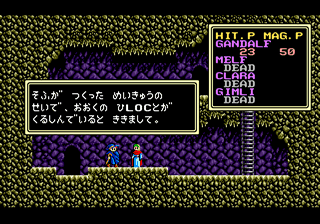 I’ve yet to encounter someone who doesn’t cringe upon first viewing Sorcerian. Visually primitive in the worst kind of way for a 16-bit title, it doesn’t endear itself to gamers quickly. In fact, I’d say that it’s more of an acquired taste. Of course, once you can get past the simple graphics the standard Falcom goodness shines through. It plays pretty solid and has a lot of customization options (almost too many), including jobs selection. Want to be a dancer, or even a clown? Go right ahead! Just don’t ask me how they tie into the storyline, as the game is way too text-heavy for casual RPG fans to enjoy. The only online help I’ve discovered so far is this FAQ which only details how to create your characters and begin the game. Sierra’s PC guide might be some of more help, only it’s rarer than a California Condor in Arizona and is missing several of the Mega Drive version’s missions.
I’ve yet to encounter someone who doesn’t cringe upon first viewing Sorcerian. Visually primitive in the worst kind of way for a 16-bit title, it doesn’t endear itself to gamers quickly. In fact, I’d say that it’s more of an acquired taste. Of course, once you can get past the simple graphics the standard Falcom goodness shines through. It plays pretty solid and has a lot of customization options (almost too many), including jobs selection. Want to be a dancer, or even a clown? Go right ahead! Just don’t ask me how they tie into the storyline, as the game is way too text-heavy for casual RPG fans to enjoy. The only online help I’ve discovered so far is this FAQ which only details how to create your characters and begin the game. Sierra’s PC guide might be some of more help, only it’s rarer than a California Condor in Arizona and is missing several of the Mega Drive version’s missions.
Surging Aura
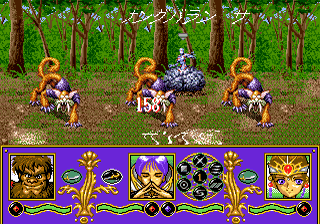 I only recently discovered this little beauty. The graphical style and menu system reminds me a lot of Phantasy Star III (they’re very, very similar) and there are lots of neat little graphical effects peppered throughout the game. There are also some great cut scenes but given my utter lack of Japanese, I could do little more than smile at the pretty pictures. As with most of the titles listed here, you will need a working grasp of the language to get anywhere and there are currently no FAQs listed that I could find. Eidolon’s Inn was attempting a translation but nothing ever came of it. That’s a shame, as this looks to be a great RPG that’s just begging to be played in English. It does look to be absolutely huge and I would refrain from tackling this one alone unless you have lots of spare time and plenty of paper (and some pencils!).
I only recently discovered this little beauty. The graphical style and menu system reminds me a lot of Phantasy Star III (they’re very, very similar) and there are lots of neat little graphical effects peppered throughout the game. There are also some great cut scenes but given my utter lack of Japanese, I could do little more than smile at the pretty pictures. As with most of the titles listed here, you will need a working grasp of the language to get anywhere and there are currently no FAQs listed that I could find. Eidolon’s Inn was attempting a translation but nothing ever came of it. That’s a shame, as this looks to be a great RPG that’s just begging to be played in English. It does look to be absolutely huge and I would refrain from tackling this one alone unless you have lots of spare time and plenty of paper (and some pencils!).
Vixen 357
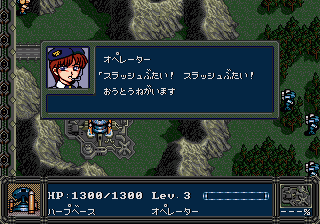 The title may sound like it refers to a basement porn film but in truth it’s the name of an excellent strategy/RPG along the same lines as the Genesis classic Warsong. Along with the Turbo Grafx legend Vasteel, Vixen 357 can be considered the spiritual grandfather of such staples of the genre like Square’s Front Mission series or Sega’s own Dark Wizard. After a few hours of play I could do little else but sigh at Sega’s stupidity in deciding to leave this game in Japan. Everything is top notch: simple and intuitive gameplay, incredible presentation (that intro, godly!), beautifully drawn graphics, speedy combat scenes with awesome backgrounds that even have parallax (take that, Dark Wizard!) and a great soundtrack. You might not be able to follow anything going on but trust me, this game is worth tracking down. This needs to be re-released somehow under the Sega Ages banner, now.
The title may sound like it refers to a basement porn film but in truth it’s the name of an excellent strategy/RPG along the same lines as the Genesis classic Warsong. Along with the Turbo Grafx legend Vasteel, Vixen 357 can be considered the spiritual grandfather of such staples of the genre like Square’s Front Mission series or Sega’s own Dark Wizard. After a few hours of play I could do little else but sigh at Sega’s stupidity in deciding to leave this game in Japan. Everything is top notch: simple and intuitive gameplay, incredible presentation (that intro, godly!), beautifully drawn graphics, speedy combat scenes with awesome backgrounds that even have parallax (take that, Dark Wizard!) and a great soundtrack. You might not be able to follow anything going on but trust me, this game is worth tracking down. This needs to be re-released somehow under the Sega Ages banner, now.
Mega CD
The amount of great RPGs for the Mega Drive that were never localized may shock some people but Mega CD owners got shafted even worse. Almost all of the great Mega CD RPGs were left behind and although we made out pretty well with what we got (thank you Working Designs!), think of how much more of your valuable time could have been lost to these awesome adventures. Read ’em and weep, folks.
3X3 Eyes
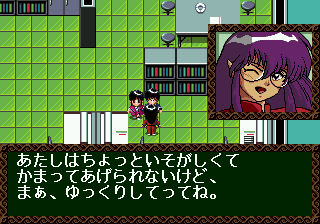 This is probably the most common way to refer to this title, whose full name translates to Seima Densetsu, The Legend of the Divine Demon. As the only Sega RPG entry into the series of games based on the popular anime (and one of only two RPGs in all), the Mega CD release takes place near the beginning of the story arc and details how many of the main characters met and began working at the Monster Hunting Society. Fans of the series will recognize what’s going on here and should even be able to piece together a bit of the plot. The rest of us…will struggle through the cumbersome menu system and turn-based battles. Voice overs abound and there are lots of nice cut scenes during the game, which tend to make things a bit more bearable. I’m sure that a re release of 3×3 Eyes today would be welcome by many RPG gamers, as anime has increased in popularity since 1993 and there is currently no FAQ available to help get through the Mega CD version.
This is probably the most common way to refer to this title, whose full name translates to Seima Densetsu, The Legend of the Divine Demon. As the only Sega RPG entry into the series of games based on the popular anime (and one of only two RPGs in all), the Mega CD release takes place near the beginning of the story arc and details how many of the main characters met and began working at the Monster Hunting Society. Fans of the series will recognize what’s going on here and should even be able to piece together a bit of the plot. The rest of us…will struggle through the cumbersome menu system and turn-based battles. Voice overs abound and there are lots of nice cut scenes during the game, which tend to make things a bit more bearable. I’m sure that a re release of 3×3 Eyes today would be welcome by many RPG gamers, as anime has increased in popularity since 1993 and there is currently no FAQ available to help get through the Mega CD version.
After Armageddon Gaiden
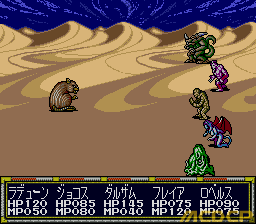 This one always makes me sad. It was slated to be Working Designs’ last release in the U.S. under the title A Side Story of Armageddon but the death of the system and the looming Saturn caused them to abandon their plans (why didn’t they just port it over to the Saturn?). It is unknown just how far they got in the translation but it’d be nice to find an English ROM leaked somewhere.
This one always makes me sad. It was slated to be Working Designs’ last release in the U.S. under the title A Side Story of Armageddon but the death of the system and the looming Saturn caused them to abandon their plans (why didn’t they just port it over to the Saturn?). It is unknown just how far they got in the translation but it’d be nice to find an English ROM leaked somewhere.
As the name implies, this is a side story to the original adventure, which was released in Japan for both the PC and PC-Engine. It’s your typical turn-based RPG and doesn’t do anything out of this world, although the fact that WD was going to localize it implies that it was at least decent. All that is known about the plot is that it involves demons. From the few screen shots I’ve seen, it appears that your party itself is composed of demons, which would have been a pretty cool premise. However, there are no FAQs or walkthroughs available and information on the game in general is very limited.
Aisle Lord
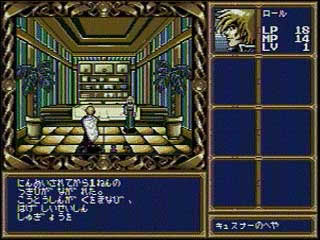 Aisle Lord fits the mold of many of the RPGs in this article in the sense that there’s nothing really innovative offered presentation-wise but the general package is solid and enjoyable. This is Wolf Team’s third effort on the Mega CD, after Faeria and Arcus Trilogy. A 3D dungeon RPG like Shining in the Darkness and Death Bringer, Aisle Lord was one of the first Sega CD RPGs to really got all out when incorporating anime-style cut scenes. Aside from a few frame rate problems, the game is quite good and you get a lengthy quest and some decent battle scenes, all dressed up in a great soundtrack by Wolf Team staple Motoi Sakuraba. Almost nothing is known about the plot, which no doubt involves a typical party of four against some looming threat of supernatural origin.
Aisle Lord fits the mold of many of the RPGs in this article in the sense that there’s nothing really innovative offered presentation-wise but the general package is solid and enjoyable. This is Wolf Team’s third effort on the Mega CD, after Faeria and Arcus Trilogy. A 3D dungeon RPG like Shining in the Darkness and Death Bringer, Aisle Lord was one of the first Sega CD RPGs to really got all out when incorporating anime-style cut scenes. Aside from a few frame rate problems, the game is quite good and you get a lengthy quest and some decent battle scenes, all dressed up in a great soundtrack by Wolf Team staple Motoi Sakuraba. Almost nothing is known about the plot, which no doubt involves a typical party of four against some looming threat of supernatural origin.
Some sites (the few that even have info on it) list Aisle Lord incorrectly as Isle Lord, most likely due to incorrect translations.
Alshark
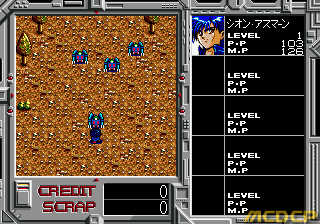 Simple to look at, yet able to hook you in for hours. That’s how it is with most classic games. Alshark may not be the best looking title on the block but it has its place. As one of the few RPGs of the time that let you upgrade your ship as well as your characters, it offers something a lot of other titles overlooked. As a young man named Shion whose father is murdered by his father-in-law, you must get to the bottom of the crime and find out why your gal’s dad went postal. Heavy Japanese aside, this game is LONG. I mean 60+ hours long, even if you speak the language. I’m not sure how big the end payoff is (again, language!) but from what I’m told, the ending is pretty neat. There are multiple, long cut scenes throughout the game, so the plot must be quite good. A FAQ is available so anyone interested in just getting through it can do so.
Simple to look at, yet able to hook you in for hours. That’s how it is with most classic games. Alshark may not be the best looking title on the block but it has its place. As one of the few RPGs of the time that let you upgrade your ship as well as your characters, it offers something a lot of other titles overlooked. As a young man named Shion whose father is murdered by his father-in-law, you must get to the bottom of the crime and find out why your gal’s dad went postal. Heavy Japanese aside, this game is LONG. I mean 60+ hours long, even if you speak the language. I’m not sure how big the end payoff is (again, language!) but from what I’m told, the ending is pretty neat. There are multiple, long cut scenes throughout the game, so the plot must be quite good. A FAQ is available so anyone interested in just getting through it can do so.
Combat is turn-based and takes place on a limited battlefield (like Traysia). The attacks have some decent effects and there are lots of planets to explore, each with several dungeons. Overall, a pretty decent little RPG.
Arcus 1-2-3
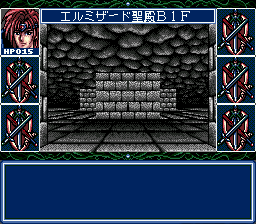 Wolf Team made some great games and it’s a pity that the only one of this series to ever make it stateside was Arcus Odyssey. On the Sega CD, however, we get the entire trilogy, which bears little resemblance to what was released on cartridge. Arcus 1 on Arcus 1-2-3 is a dungeon crawler RPG, similar to the Bard’s Tale, and actually came out on Japanese PCs before Odyssey was released on the Genesis. It shares some characters with its cartridge sibling, but the plots are different. The whole goddess of light vs goddess of darkness storyline, the locations, and the supporting characters — like the pirate — from Arcus Odyssey aren’t even in Arcus 1. There are some other notable differences too. For example, you don’t get to pick from multiple character types; you always start out as the male Jedah, then gain other members to add to your party throughout the quest, including a little boy minstrel who doesn’t do much except sing during battle. He’s great and actually becomes the hero for episodes 2 and 3!
Wolf Team made some great games and it’s a pity that the only one of this series to ever make it stateside was Arcus Odyssey. On the Sega CD, however, we get the entire trilogy, which bears little resemblance to what was released on cartridge. Arcus 1 on Arcus 1-2-3 is a dungeon crawler RPG, similar to the Bard’s Tale, and actually came out on Japanese PCs before Odyssey was released on the Genesis. It shares some characters with its cartridge sibling, but the plots are different. The whole goddess of light vs goddess of darkness storyline, the locations, and the supporting characters — like the pirate — from Arcus Odyssey aren’t even in Arcus 1. There are some other notable differences too. For example, you don’t get to pick from multiple character types; you always start out as the male Jedah, then gain other members to add to your party throughout the quest, including a little boy minstrel who doesn’t do much except sing during battle. He’s great and actually becomes the hero for episodes 2 and 3!
The most notable difference is that the gameplay is completely different on the Sega CD. Arcus 1 is a pure RPG — no action elements. It’s got turn-based battles, you can stop and walk away for an hour without pausing because time doesn’t pass unless you’re moving, and there are dungeons you have to map out on graph paper. Simply put, it’s an RPG. The whole package does sport a great soundtrack by master composer Motoi Sakuraba, as well as some quality anime cut scenes, but there aren’t any FAQs or walkthroughs around, so you’ll have your work cut out for you. It’s worth the effort though, so give it a shot!
*Note: Thanks to Zigfried the Trizealot from the shmups forum for his contribution to this entry.
Cosmic Fantasy Stories
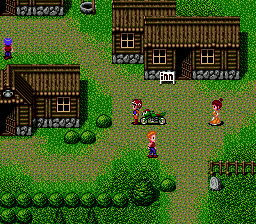 I have Cosmic Fantasy for the Turbo Duo and though I was initially intrigued by it, I eventually lost most of my interest due to the cookie cutter gameplay and the horrible random battles (step and fight, step and fight!). The Mega CD release includes the Turbo game, as well as the original which features a hero named Yuu. A collection may seem nice but having both games in a single set doesn’t account for much when neither game sets the world on fire. I can see people wanting to play these games back in 1992 but today’s RPG fan, raised on budget monsters such as the Final Fantasy series, will blow right past them. Old school gamers and Mega CD fans should be kept busy for a while, since the actual gameplay is quite user friendly. This is your typical “go her, do this” formula, which requires little knowledge of the language to play through. Just don’t expect a showstopper with this one. Definitely the weakest of the bunch listed here.
I have Cosmic Fantasy for the Turbo Duo and though I was initially intrigued by it, I eventually lost most of my interest due to the cookie cutter gameplay and the horrible random battles (step and fight, step and fight!). The Mega CD release includes the Turbo game, as well as the original which features a hero named Yuu. A collection may seem nice but having both games in a single set doesn’t account for much when neither game sets the world on fire. I can see people wanting to play these games back in 1992 but today’s RPG fan, raised on budget monsters such as the Final Fantasy series, will blow right past them. Old school gamers and Mega CD fans should be kept busy for a while, since the actual gameplay is quite user friendly. This is your typical “go her, do this” formula, which requires little knowledge of the language to play through. Just don’t expect a showstopper with this one. Definitely the weakest of the bunch listed here.
Daihoushinden
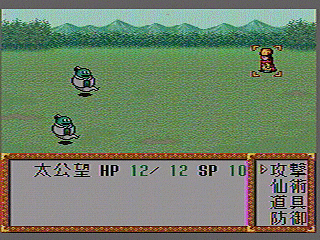 Also translated as Dai Fushinden, not much is really known about this elusive title. Apparently, it’s very text-heavy and highly unplayable to non-Japanese speakers. Traditional in style and scope, I’ve yet to read about anything that would set Daihoushinden apart from the rest of the Sega CD RPG crop. A battle against a world-threatening evil? Check. Lots of towns to visit? Check. Beautiful CD soundtrack? Check. The graphical style reminds me a bit of Silver Star Story, and that’s not necessarily a bad thing.
Also translated as Dai Fushinden, not much is really known about this elusive title. Apparently, it’s very text-heavy and highly unplayable to non-Japanese speakers. Traditional in style and scope, I’ve yet to read about anything that would set Daihoushinden apart from the rest of the Sega CD RPG crop. A battle against a world-threatening evil? Check. Lots of towns to visit? Check. Beautiful CD soundtrack? Check. The graphical style reminds me a bit of Silver Star Story, and that’s not necessarily a bad thing.
Somewhere, I’m sure someone is working on a fan translation, and I would love to finally get to sink my teeth into this game, if only to see what all the hubbub is about. It hardly comes up on eBay and isn’t readily available at most import stores so be sure to grab a copy if you can find one.
Death Bringer
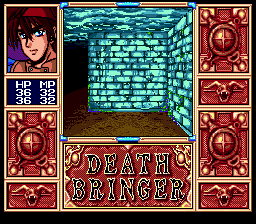 First of all, this game should not be confused with the Amiga release. The only thing they have in common is the title. Initially a PC game that was also released on the PC-Engine, it eventually made its way to the Mega CD. It uses the same engine as Aisle Lord and I’m still not sure if that’s good or bad. Gameplay is handled in the same style as Shining in the Darkness, right down to the confined hallways and cramped dungeons. Even though it may not be the best game in this bunch, it still deserves to be played. Fans of the Shining in the Darkness shouldn’t have a problem with the style of presentation and most other gamers should get used to it pretty quick.
First of all, this game should not be confused with the Amiga release. The only thing they have in common is the title. Initially a PC game that was also released on the PC-Engine, it eventually made its way to the Mega CD. It uses the same engine as Aisle Lord and I’m still not sure if that’s good or bad. Gameplay is handled in the same style as Shining in the Darkness, right down to the confined hallways and cramped dungeons. Even though it may not be the best game in this bunch, it still deserves to be played. Fans of the Shining in the Darkness shouldn’t have a problem with the style of presentation and most other gamers should get used to it pretty quick.
If anyone should have any information about the plot to Death Bringer, please let me know and I’ll promptly post it here.
Faeria, or Fhey Area
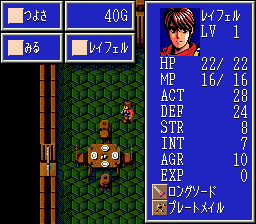 Rumor has it that this game was originally released under the name Fhey Area, due to a mistranslation of the Japanese phonemes associated with the Katakana in its title. Later versions had the correct name, Faeria. Regardless of what it’s called, this is an excellent traditional RPG. As Raphael, you discover that you may be related to the Spirit Rider, a legendary hero who once saved the land. You are invited to visit the queen to delve further into your lineage but she disappears once you arrive. Was she kidnapped? It now appears that you have yet another mystery to solve.
Rumor has it that this game was originally released under the name Fhey Area, due to a mistranslation of the Japanese phonemes associated with the Katakana in its title. Later versions had the correct name, Faeria. Regardless of what it’s called, this is an excellent traditional RPG. As Raphael, you discover that you may be related to the Spirit Rider, a legendary hero who once saved the land. You are invited to visit the queen to delve further into your lineage but she disappears once you arrive. Was she kidnapped? It now appears that you have yet another mystery to solve.
While Faeria offers very little in terms of innovation (save for the battle sequences, which use character portraits that change with each command or attack), the game itself is quite solid. You should be able to plod through it, even without a FAQ to aid you and there’s some decent adventuring to be had here.
Heroic Legend of Arslan
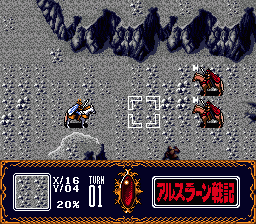 There has long been a pattern of anime series being made into video games. Some are great, some suck, and some are just plain average. I think it would be safe to say that Heroic Legend of Arslan fits into that final category, as it doesn’t excel at anything it sets out to do. The graphics and music are nothing spectacular, and the game itself is another cookie cutter strategy/RPG. I can see fans of the OVA (I’m one) and perhaps strategy fans tracking this one down but not really anyone else. The Japanese-heavy menu system can be a real burden at times and the lack of anything other than some great cut scenes (surprise!) doesn’t really motivate you to play through to the end. For some real strategy/RPG fun, go play Vixen 357 or Dark Wizard.
There has long been a pattern of anime series being made into video games. Some are great, some suck, and some are just plain average. I think it would be safe to say that Heroic Legend of Arslan fits into that final category, as it doesn’t excel at anything it sets out to do. The graphics and music are nothing spectacular, and the game itself is another cookie cutter strategy/RPG. I can see fans of the OVA (I’m one) and perhaps strategy fans tracking this one down but not really anyone else. The Japanese-heavy menu system can be a real burden at times and the lack of anything other than some great cut scenes (surprise!) doesn’t really motivate you to play through to the end. For some real strategy/RPG fun, go play Vixen 357 or Dark Wizard.
Illusion City
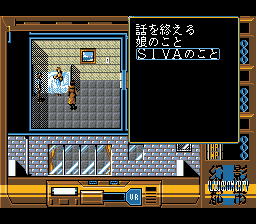 When it comes to disasters destroying much of humankind on the Sega CD, Snatcher doesn’t have a monopoly by a long shot. In Illusion City, man is threatened by a demon invasion that releases all sorts of nastiness upon the population, especially Hong Kong. As a demon hunter, you must solve a mystery that involves everything from the powerful SIVA corporation that now rules the island to Chinese mythology. Since all hunters/agents in these types of games must have mysterious pasts, you of course have no memory of who you are or where you came from. All you know is that both you and a young girl named Meihong (who travels with you) have been trained for this fateful purpose.
When it comes to disasters destroying much of humankind on the Sega CD, Snatcher doesn’t have a monopoly by a long shot. In Illusion City, man is threatened by a demon invasion that releases all sorts of nastiness upon the population, especially Hong Kong. As a demon hunter, you must solve a mystery that involves everything from the powerful SIVA corporation that now rules the island to Chinese mythology. Since all hunters/agents in these types of games must have mysterious pasts, you of course have no memory of who you are or where you came from. All you know is that both you and a young girl named Meihong (who travels with you) have been trained for this fateful purpose.
Sounds interesting enough. The gameplay is pretty standard fare, with a Phantasy Star II-style viewpoint for both the field and combat. As with most CD titles, lots of cut scenes move the plot forward. Another text-heavy RPG with no available FAQ, you’ll need to be brave to tackle this one.
Might & Magic III: Isles of Terra
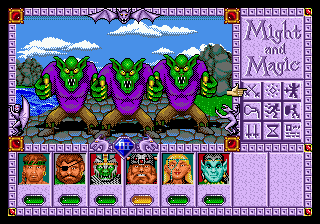 Rumored to have been released on the Genesis, Might & Magic III did come out for the Mega CD in Japan, where was quickly overshadowed by bigger titles and the eventual demise of the console. It is, essentially, a direct port of the PC game, and this leads me to a burning question: why on Earth was it released only in Japan? The game was already in English! Normally, titles are confined to the east when large amounts of translation is required. Here, the opposite happened. The Sega CD was in dire need of some real RPGs, and this would have fit the bill nicely. I assume it has something to do with the half-baked business decisions Sega of Japan was making at the time.
Rumored to have been released on the Genesis, Might & Magic III did come out for the Mega CD in Japan, where was quickly overshadowed by bigger titles and the eventual demise of the console. It is, essentially, a direct port of the PC game, and this leads me to a burning question: why on Earth was it released only in Japan? The game was already in English! Normally, titles are confined to the east when large amounts of translation is required. Here, the opposite happened. The Sega CD was in dire need of some real RPGs, and this would have fit the bill nicely. I assume it has something to do with the half-baked business decisions Sega of Japan was making at the time.
Isles of Terra uses the same first-person perspective as its cartridge sibling Gates to Another World, but has much more color and detail in the graphics. A full CD soundtrack enhances things greatly, and PC veterans can attest to just what Sega CD owners were missing out on. Importing is a possibility, but I would rather just play the game in English on my PC (unless someone translates the game).
Record of Lodoss War
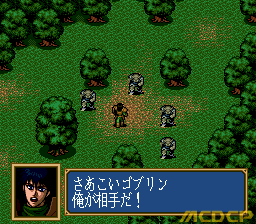 Based on the extremely popular anime of the same name, Record of Lodoss War is a strategy/RPG in the same vein as the Shining Force series. Shamefully, only one game carrying the Lodoss title was ever released in the U.S. (for Dreamcast), which shows once again how totally clueless Sega was as to what gamers wanted. The Mega CD game is one of the best games in its class, featuring beautiful hand-drawn artwork and a soundtrack to die for. There are lots of OVA-quality cut scenes sprinkled throughout the adventure and the best part is that Lodoss is quite playable to the non-Japanese speaker. The quality level here is astounding and I always give my forehead the Sega Slap when I wonder why it was never released over here, especially given the success of the Shining games. This should have been a no-brainer.
Based on the extremely popular anime of the same name, Record of Lodoss War is a strategy/RPG in the same vein as the Shining Force series. Shamefully, only one game carrying the Lodoss title was ever released in the U.S. (for Dreamcast), which shows once again how totally clueless Sega was as to what gamers wanted. The Mega CD game is one of the best games in its class, featuring beautiful hand-drawn artwork and a soundtrack to die for. There are lots of OVA-quality cut scenes sprinkled throughout the adventure and the best part is that Lodoss is quite playable to the non-Japanese speaker. The quality level here is astounding and I always give my forehead the Sega Slap when I wonder why it was never released over here, especially given the success of the Shining games. This should have been a no-brainer.
Seven heroes must rise up to stop Kardiss, the goddess of destruction, from returning from her prison beneath the isle of Marmo. Fans of the anime will recognize everyone and should be able to follow the basic plot of the game. Definitely a game to have in your Mega CD library.
Schwarzschild
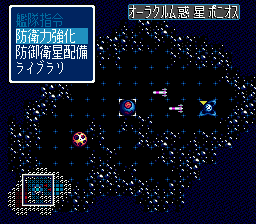 The term Schwarzschild refers to a black whole that is stationary in space. That makes sense, as this game takes place in space. A simulation/RPG, Schwarzschild (or Mega Schwarzschild, as it’s sometimes called) is a port of the PC-Engine game, which itself comes from the original released on the MSX. Very little information is available on this game and there are currently no FAQS or walkthroughs available that I could find. I’m not even entirely sure what the game’s premise is. I would really like to sink my teeth into this one, as space games with RPG elements (like Star Control and Star Flight) were awesome.
The term Schwarzschild refers to a black whole that is stationary in space. That makes sense, as this game takes place in space. A simulation/RPG, Schwarzschild (or Mega Schwarzschild, as it’s sometimes called) is a port of the PC-Engine game, which itself comes from the original released on the MSX. Very little information is available on this game and there are currently no FAQS or walkthroughs available that I could find. I’m not even entirely sure what the game’s premise is. I would really like to sink my teeth into this one, as space games with RPG elements (like Star Control and Star Flight) were awesome.
An interesting note is that this title was supposed to be rare, causing prices on eBay to rise dramatically. However, this turned out to be false, which just goes to show how stupid people on eBay can actually be.
Shadowrun
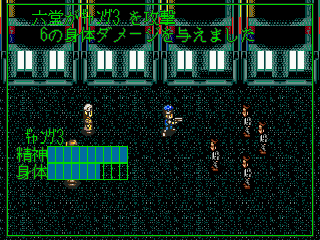 Long a cult favorite here in the U.S., the Mega CD got its own version of the cyber punk thriller that was quite different from the one released here. Genesis Shadowrun Producer Tony Van had nothing to do with the project but even so, it remains one of the games most requested for translation in the system’s entire library. A hybrid of digital comics and traditional RPG gameplay, the Japanese version of Shadowrun has more in common with fellow CD alumni Snatcher than just the futuristic Blade Runner feel. The plot is carried out through static screens using commands such as “look” and “talk” while the actual combat is done in a manner similar to early Ultima titles. A dice roll determines each action’s outcome and you can even fight in cyberspace!
Long a cult favorite here in the U.S., the Mega CD got its own version of the cyber punk thriller that was quite different from the one released here. Genesis Shadowrun Producer Tony Van had nothing to do with the project but even so, it remains one of the games most requested for translation in the system’s entire library. A hybrid of digital comics and traditional RPG gameplay, the Japanese version of Shadowrun has more in common with fellow CD alumni Snatcher than just the futuristic Blade Runner feel. The plot is carried out through static screens using commands such as “look” and “talk” while the actual combat is done in a manner similar to early Ultima titles. A dice roll determines each action’s outcome and you can even fight in cyberspace!
For more info on the whole Shadowrun scenario, check out our interview with producer/designer Tony Van.
Sin Megamitensei
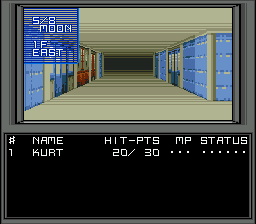 From SegaBase: This is one of the most unusual RPGs that you will ever experience in terms of gameplay. For starters, it uses first-person perspective, which is something quite rare in a sci-fi RPG but has seen its uses in the fantasy arena. Next, instead of fighting with your enemies, you negotiate with them first – a good outcome and they will help you or go away, a bad outcome and the battle is joined. Finally, there is always the possibility that two of your enemies will join together into an entirely new, potentially more dangerous foe than before. It’s too bad that this has such a limited audience in the West, because it will shake your basic understanding of what an RPG is supposed to be down to its very core.
From SegaBase: This is one of the most unusual RPGs that you will ever experience in terms of gameplay. For starters, it uses first-person perspective, which is something quite rare in a sci-fi RPG but has seen its uses in the fantasy arena. Next, instead of fighting with your enemies, you negotiate with them first – a good outcome and they will help you or go away, a bad outcome and the battle is joined. Finally, there is always the possibility that two of your enemies will join together into an entirely new, potentially more dangerous foe than before. It’s too bad that this has such a limited audience in the West, because it will shake your basic understanding of what an RPG is supposed to be down to its very core.
This game is also known by the Western translated titles New Digital Devil Story and Devil Summoner: The New Adventure. Where there are many games in the Megami Tensei franchise for other Japanese platforms, this is the only version of the game available for Mega CD. No installments were released for any other platform prior to Mega CD. Two other installments were later released for Saturn.
Be sure to read an excellent article on the series over at Hardcore Gaming 101.
Wow. It’s incredible that so many great RPGs never left Japan. Had Sega been more adept at predicting the market (we all know just how inept they were during the ’90s), they could really have brought a lot of RPG fans over to their camp with this kind of line up. Sadly, we all know that it was Square who knew how to tap the genre and rest, as they say, is history. Most gamers consider the Sega CD to be a small footnote in Sega’s long and illustrious past and a relative few ever dared to import RPGs for their Mega Drive. Today, however, the blessings of technology allow us to finally experience many of those curious games that wowed us in ads in such magazines as Sega Visions, GamePro, Game Fan, and EGM. Don’t let them disappear! You owe it to yourself to play these awesome adventures.

Recent Comments